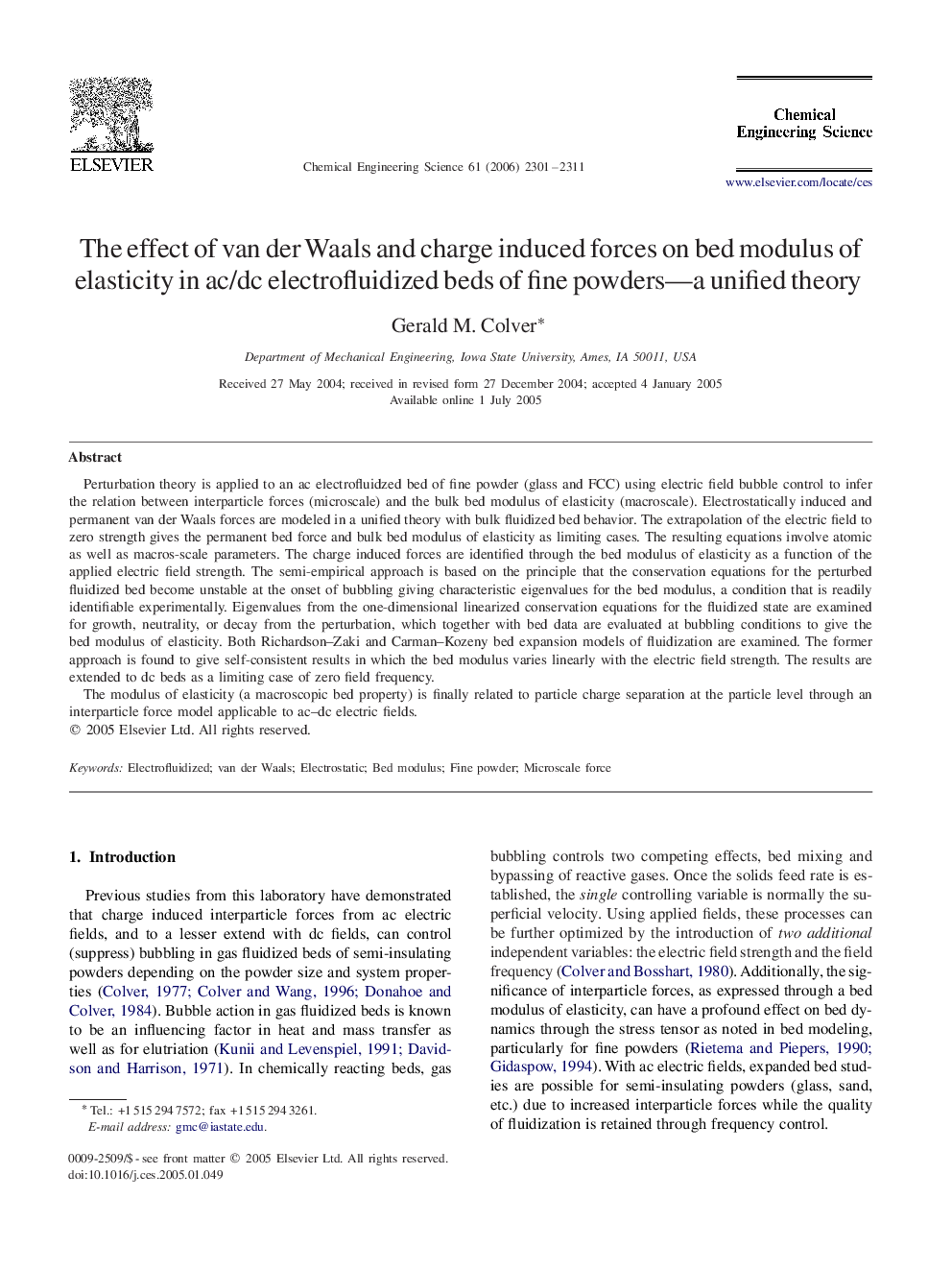| Article ID | Journal | Published Year | Pages | File Type |
|---|---|---|---|---|
| 159131 | Chemical Engineering Science | 2006 | 11 Pages |
Perturbation theory is applied to an ac electrofluidzed bed of fine powder (glass and FCC) using electric field bubble control to infer the relation between interparticle forces (microscale) and the bulk bed modulus of elasticity (macroscale). Electrostatically induced and permanent van der Waals forces are modeled in a unified theory with bulk fluidized bed behavior. The extrapolation of the electric field to zero strength gives the permanent bed force and bulk bed modulus of elasticity as limiting cases. The resulting equations involve atomic as well as macros-scale parameters. The charge induced forces are identified through the bed modulus of elasticity as a function of the applied electric field strength. The semi-empirical approach is based on the principle that the conservation equations for the perturbed fluidized bed become unstable at the onset of bubbling giving characteristic eigenvalues for the bed modulus, a condition that is readily identifiable experimentally. Eigenvalues from the one-dimensional linearized conservation equations for the fluidized state are examined for growth, neutrality, or decay from the perturbation, which together with bed data are evaluated at bubbling conditions to give the bed modulus of elasticity. Both Richardson–Zaki and Carman–Kozeny bed expansion models of fluidization are examined. The former approach is found to give self-consistent results in which the bed modulus varies linearly with the electric field strength. The results are extended to dc beds as a limiting case of zero field frequency.The modulus of elasticity (a macroscopic bed property) is finally related to particle charge separation at the particle level through an interparticle force model applicable to ac–dc electric fields.
